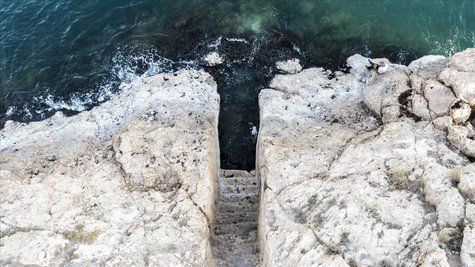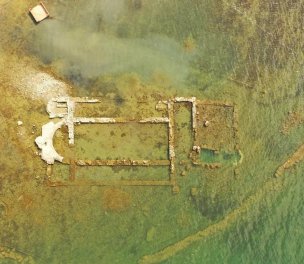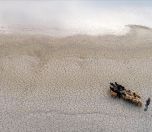Photos: AA
Click to read the article in Turkish
A group of local environmental activists took out their bikes to ride on the shallow waters of Lake Van to bring attention to the effects of the climate crisis on Türkiye's largest salty-soda lake.
They cycled and walked on the islets of the shores of Lake Van formed due to the water level decrease. The ongoing drought brought the water level to a critical low, with islets appearing in front of Van's Yüzüncü Yıl University campus.
 The Urartu-era port that has resurfaced recently.
The Urartu-era port that has resurfaced recently.
As the water level drops, ancient buildings have also resurfaced. On September 28, a port belonging to the Urartu period reemerged. It is located near Van's "Gentlemen's castle" (Beylerin Kalesi).
Prof. Rafet Çavuşoğlu, head of Yüzüncü Yıl University Archeology Department, said it was the first time they had encountered such a structure. The port is estimated to be three meters wide, with eleven steps built on the bedrock covering approximately 20 meters for the ships to dock.
About Lake Van
Lake Van is in the eastern provinces of Van and Bitlis. Formed after Volcano Nemrut erupted, the lake's water is unique, as it is both salty and soda. This combination limits its biodiversity. Only 103 species of phytoplankton, 36 species of zooplankton and two species of fish live in the lake.
.jpg)
Due to a pH of 9.8 and a salinity of 19 percent, the lake does not freeze, despite the high altitude and harsh winters. On the bottom of the 3,713 square-kilometer lake, there are stalagmites, also known as 'underwater fairy chimneys', which can be up to 23 meters in height. (TY/MW/VK)




.jpg)
as.jpg)


